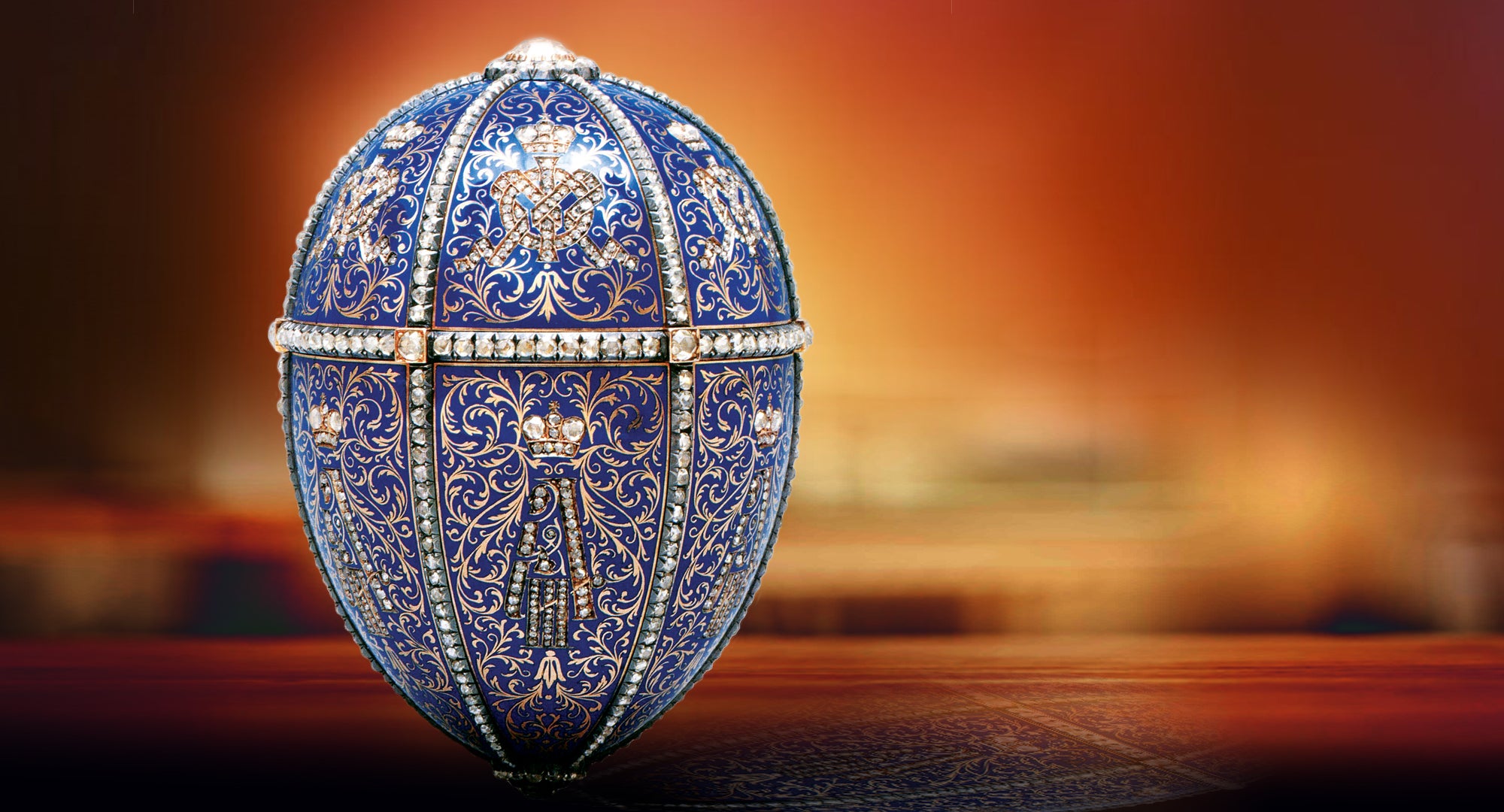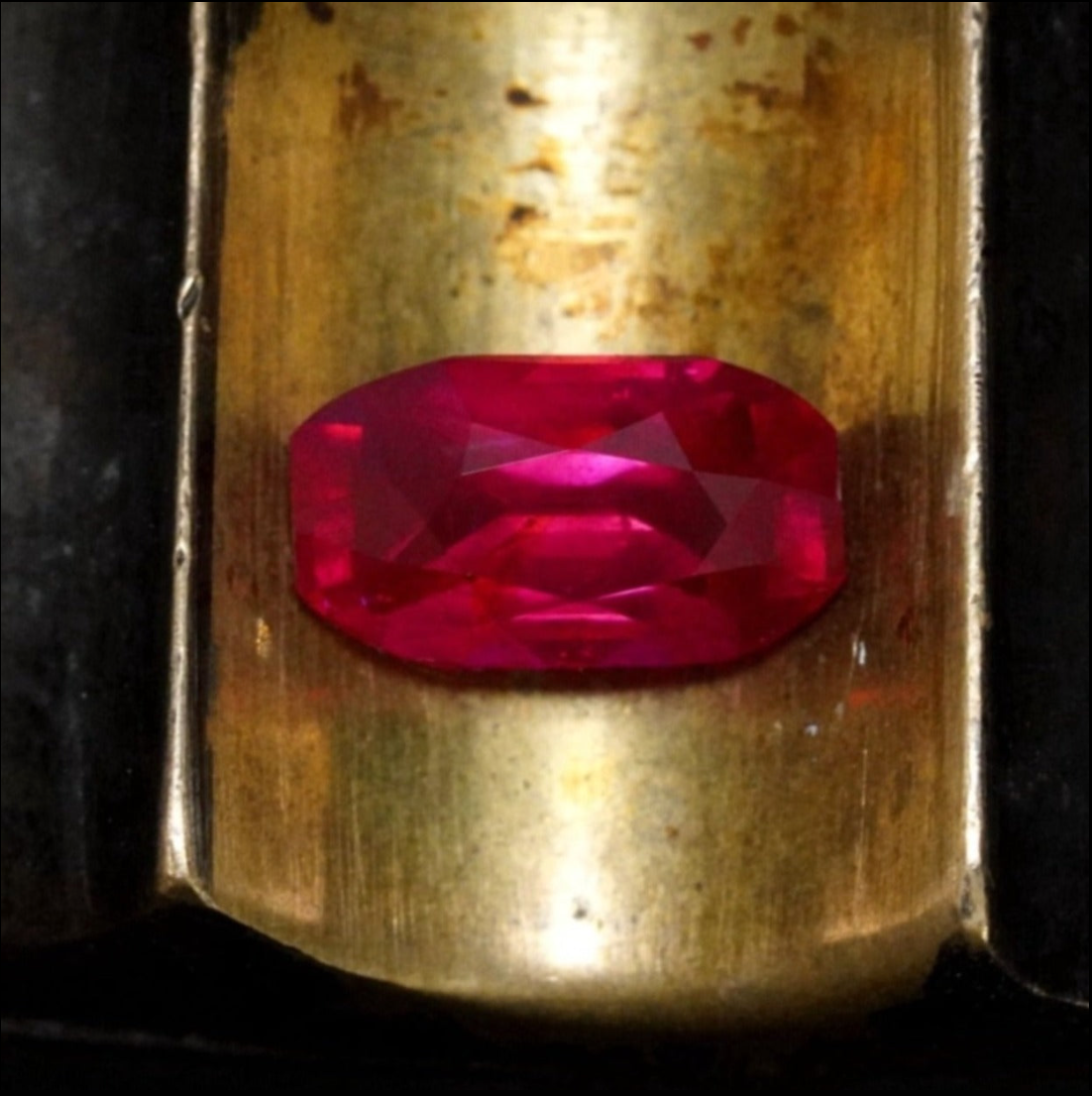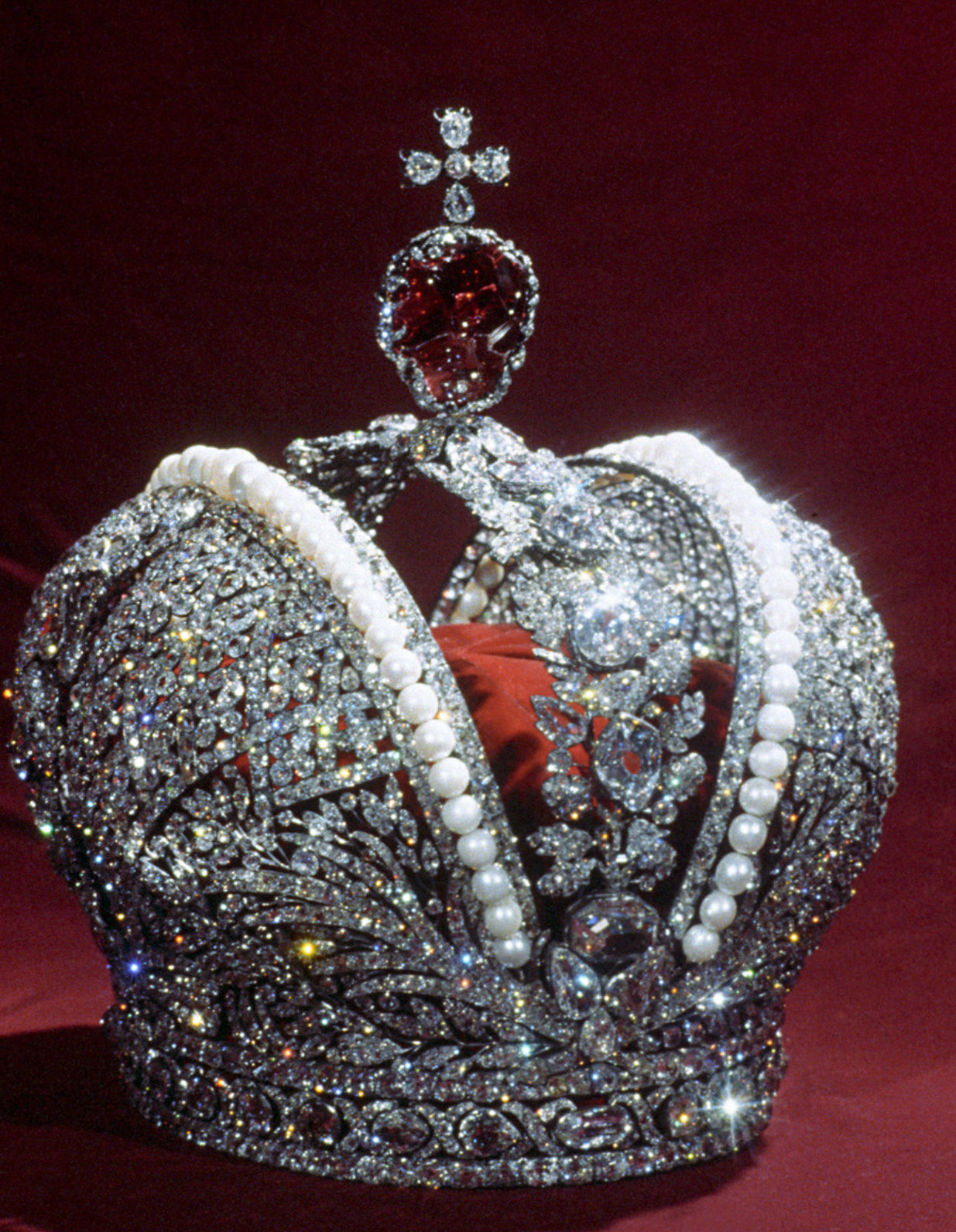
Jeweled Marvels: Fabergé’s Enchanting Eggs
With their opulent aesthetic and exemplary craftsmanship, Fabergé eggs represent the pinnacle of luxury and artistic ingenuity. For well over a century, these iconic egg-shaped treasures, each adorned with rare precious materials and many concealing a magical surprise, have fascinated both connoisseurs and casual observers alike, transcending mere ornamentation to embody the epitome of sophistication and splendor.
Each unique egg, a masterpiece unto itself, is a testament to the vision and expertise of Peter Carl Fabergé and his team of skilled artisans, whose dedication to perfection knew no bounds. From their genesis as gifts for the Russian aristocracy to the outstanding commissions of today, Fabergé eggs are some of the most coveted and valuable objects ever made, serving as timeless reminders of the everlasting allure of extraordinary creativity and extravagance.
The Emergence of Fabergé
The story of Fabergé is a tale of artistic brilliance and entrepreneurial spirit that spans generations. It began in 1842 when Gustav Fabergé, a French master jeweler renowned for his impeccable craftsmanship, opened a modest shop in the heart of St. Petersburg, Russia. With dedication and skill, Gustav built a reputation for excellence, crafting exquisite jewelry pieces that captured the attention of discerning clientele.
In 1872, the legacy of Fabergé passed into the hands of Gustav’s son, Peter Carl Fabergé. Under Peter’s visionary leadership, the small family business underwent a remarkable transformation, evolving into a global powerhouse of luxury and innovation. Peter Carl Fabergé possessed a rare combination of artistic talent and business acumen, which propelled the House of Fabergé to unprecedented heights of success.

Peter Carl Fabergé
The turning point for Fabergé came in 1885 when Peter was appointed as the official jeweler to the Russian Imperial Court. This prestigious designation catapulted Fabergé into the realm of royalty, as Peter’s creations became coveted treasures among the elite circles of European nobility. The House of Fabergé became synonymous with luxury, attracting patrons from across the continent who sought the unparalleled craftsmanship and decadent designs for which Fabergé had become renowned.
Under Peter’s stewardship, the House of Fabergé flourished, producing an array of exquisite jewelry pieces, objets d’art, and, of course, the iconic Fabergé eggs. Each creation bore the hallmark of Peter’s unparalleled attention to detail and innovative design, captivating the imagination of collectors, connoisseurs and enthusiasts worldwide.
Fabergé’s Signature Craftsmanship
One of the most renowned design techniques used in crafting the Fabergé eggs is guilloché enamel work, a method perfected by Peter Carl Fabergé himself. Fabergé was a master of guilloché, demonstrating unparalleled skill and precision in its execution. This intricate process involves engraving a precise pattern onto metal surfaces, often geometric or floral. Layers of translucent enamel are then meticulously applied by hand into the engraved metal until they achieve a flawless finish. The translucent enamel allows light to penetrate the layers, resulting in a luminous quality that gives Fabergé eggs their distinctive radiance and depth. Fabergé’s artisans were renowned for their mastery of enamel work, blending colors and textures to mesmerizing effect.
In addition to guilloché enamel work, Fabergé eggs are distinguished by the lavish use of precious gemstones and metals. Each egg is adorned with an array of meticulously chosen gemstones such as diamonds, emeralds, rubies and sapphires, selected for their quality, color and brilliance. These precious stones are expertly set in elaborate designs, often incorporating intricate filigree work and delicate detailing that showcase the finest craftsmanship.

The gem-encrusted Mosaic Egg, 1914, considered one of the most sophisticated and extraordinary of all Fabergé's Imperial Easter Eggs, along with the surprise it conceals within: an ivory medallion with profiles of Tsar Nicholas II and Tsarina Alexandra's five children on one side and a basket of flowers and their names on the reverse.
Having mastered the intricate techniques of guilloché enamel work and gemstone setting, Peter Carl Fabergé and his skilled artisans brought to life some of the most iconic and cherished Fabergé eggs in history. These exquisite creations showcase the culmination of Fabergé’s expertise and artistic vision, each egg bearing testament to the incomparable talent that defines the legacy of the House of Fabergé.
Fabergé’s Imperial Eggs
The Imperial Eggs, a collection reserved exclusively for Fabergé’s most prestigious creations, are revered not only as the ultimate commissions of objets d’art but also serve as poignant reminders of an era gone by.
The celebrated collection includes 50 Imperial Easter Eggs, meticulously crafted under the guidance of Peter Carl Fabergé for the last of the Romanov family, which ruled Russia from 1613 to 1917, spanning several generations.

Empress Maria Feodorovna, wife of Russian Emperor Alexander III.
The first Imperial Easter Egg was created in 1885, when Emperor Alexander III commissioned Fabergé to create an egg for his wife, Empress Maria Feodorovna, in honor of the longstanding Russian Orthodox tradition of exchanging colorful eggs at Easter. The empress so deeply admired the exquisite craftsmanship of the egg, that Peter, as official jeweler to the Russian Imperial Court, was then tasked with creating a unique egg each Easter during the family’s reign, with three specific criteria: It must be egg-shaped, one-of-a-kind and contain a surprise.
Nine other Imperial Easter Eggs were crafted for Empress Maria Feodorovna during her husband’s reign (1885–1893). The remaining 40 were created during the rule of his devoted son, Nicholas II (1894–1917), with each year yielding two eggs—one for his mother, the dowager, and another for his wife, Empress Alexandra Feodorovna.

Emperor Nicholas II, his wife, Empress Alexandra Feodorovna, and children.
These masterpieces, the pinnacle of achievement for the renowned Russian jewelry house, are deeply intertwined with the glory and eventual tragedy of the Romanov family. During the Russian Revolution in 1917, the fate of the Fabergé eggs, along with many other treasures of the Russian Imperial family, became uncertain. The Bolsheviks, who led the revolution and overthrew the Russian monarchy, seized control of the country. As part of their efforts to eliminate symbols of the old regime and redistribute wealth, they confiscated numerous valuables belonging to the Imperial family, including the Fabergé eggs.
Subsequently, the eggs were inventoried and stored away by the new Soviet government. Some were sold off or given as gifts to foreign dignitaries to raise funds for the cash-strapped Soviet regime.

The diamond-encrusted Winter Egg, 1913, the most expensive Imperial Easter Egg ever made, along with the surprise it conceals within: a basketful of jeweled wood anemones.
Over time, various Fabergé eggs were dispersed across the globe through different channels. Some found their way into private collections, while others were acquired by museums and institutions. The Kremlin Armoury Museum in Moscow houses the largest collection of these eggs, with other notable collections in the Fabergé Museum in St. Petersburg, Russia; the Metropolitan Museum of Art in New York City; the Victoria and Albert Museum in London; and the Walters Art Museum in Baltimore.
While there have been efforts to track down and reclaim the missing Fabergé eggs, reportedly, seven remain elusive. Five are believed to have been lost forever, while the whereabouts of the remaining two remain a mystery. In a fascinating turn of events, the existence of the long-lost Third Imperial Easter Egg was revealed to the public in 2014. This remarkable egg, adorned with intricate gold ridges and housing a lady’s Vacheron Constantin watch, had a surprising journey. Reportedly, it was unknowingly purchased as scrap metal at an American flea market in the 1990s. Despite being acquired for a mere $14,000, its true value as an Imperial Easter Egg was only realized in 2012 by the unsuspecting buyer.
Since 1917, only two other eggs have been commissioned in the class of Imperial Eggs. One, along with several special treasures from Fabergé’s Imperial Easter Eggs collection, can be seen below:
1885: The Hen Egg

The Hen Egg
The series of legendary Fabergé Imperial Easter Eggs began in 1885, when Emperor Alexander III of Russia, through the intermediary of his uncle, Grand Duke Vladimir, commissioned an Easter egg from Fabergé as an Easter gift for his wife, Empress Maria Feodorovna. Originally planned by Fabergé to contain a diamond ring, the final version, guided by the Emperor’s specific instructions, featured a valuable ruby pendant instead. Titled “The Hen Egg,” the objet d’art is characterized by an enameled white outer shell, which opens with a twist to reveal its first surprise: a yellow gold yolk. Within this yolk lies an enameled and chased gold hen, which once held a replica of the Imperial Crown and a precious ruby egg pendant. Unfortunately, both the replica of the Imperial Crown and the ruby pendant have been lost.
1895: The Rosebud Egg

The Rosebud Egg
Gifted by Emperor Nicholas II to his wife, Empress Alexandra Feodorovna, a few months after their marriage, “The Rosebud Egg” is crafted from multicolored gold covered with translucent red guilloché enamel, with bands of rose-cut diamonds and diamond-set Cupid’s arrows to symbolize love. At the highest point of the egg sits a miniature portrait of the young Emperor under a table-cut diamond, while the base bears the date 1894. Within the egg is a surprise rosebud created from yellow and green enamel. Additional surprises within, such as a diamond-set crown and ruby drop, are known only from an old photograph.
1897: The Coronation Egg

The Coronation Egg
Arguably one of Fabergé’s most iconic creations, “The Coronation Egg” holds special significance as it was presented by Emperor Nicholas II to his wife, Empress Alexandra Feodorovna, to commemorate her ceremonial arrival in Moscow on the day of their coronation, May 26, 1896. The egg’s exterior is crafted from multicolored gold covered with translucent yellow guilloché enamel along with double-headed eagles in black enamel encrusted with diamonds, evoking the opulent Cloth of Gold robe the empress wore during the ceremony. At the top of the egg lies the empress’s jeweled monogram beneath a portrait diamond, while the base bears the date of the coronation. Upon opening, the egg reveals a remarkable surprise: a miniature replica of the original 18th-century carriage by Buckendahl that the Empress rode in, realized in yellow gold, red enamel and diamonds. The carriage, which features working doors and wheels, originally contained an emerald drop, later replaced by a yellow briolette-cut diamond (both now lost). The intricately detailed coach, measuring just 3 11/16 inches (9.4 cm), was meticulously crafted by artisan Georg Stein over 13 months.
1898: The Lilies of the Valley Egg

The Lilies of the Valley Egg
The exquisite Art Nouveau “Lilies of the Valley Egg,” presented by Emperor Nicholas II to his wife, Empress Alexandra Feodorovna, was designed in her favorite style. It features pink guilloché enamel lavishly decorated with sprays of pearl- and diamond-set lily of the valley, her favorite flower. The egg rests elegantly on four cabriolet feet intricately intertwined with diamond-set foliage. Upon twisting one of the pearls, a delightful surprise is revealed: a trio of miniature portraits depicting the emperor and the couple’s eldest daughters, Olga and Tatiana, crowned with a diamond- and ruby-set Imperial Crown.
1911: The Bay Tree Egg

The Bay Tree Egg
“The Bay Tree Egg,” gifted by Emperor Nicholas II to his mother, Dowager Empress Maria Feodorovna, draws inspiration from a French 18th-century singing bird automaton. The bay tree sculpture includes an impressive array of components, including 325 nephrite leaves, 110 opalescent white enamel flowers, 25 diamonds, 20 rubies, 53 pearls, 219 rose-cut diamonds and one large rose-cut diamond. When the clockwork mechanism is wound up and activated, a beautifully feathered bird emerges, flapping its wings, turning its head, opening its beak and enchanting all with its melodious song.
2018: The Spirit of Ecstasy Egg

The Spirit of Ecstasy Egg
In 2018, a new Fabergé egg was brought to life through a collaboration between Fabergé and one of the world’s most esteemed luxury brands, Rolls-Royce. This magnificent creation, titled “The Spirit of Ecstasy Egg,” marks only the second egg to be commissioned as a prestigious Imperial Egg since the Russian Revolution in 1917.
The Spirit of Ecstasy Egg embodies both the artistic design and engineering skill expected from a collaboration between both distinguished brands and likely has one of the most complicated openings of any Fabergé egg.

Crafted with “blades” of 18-karat white gold, rose gold adorned with nearly 10 carats of colorless diamonds, and natural amethyst totaling 320 carats, the egg sits atop a hand-engraved 18-karat white gold base featuring purple enamel guilloché. A discreet lever at the base, which houses the piece’s “engine,” initiates a captivating sequence of movement: As the blades gracefully open, they reveal an exquisite figurine of the Spirit of Ecstasy, Rolls-Royce’s enigmatic motor mascot, sculpted by hand from frosted rock crystal.
The purple enamel and amethyst hues pay homage to Fabergé’s heritage, while its technical prowess shines through in the intricate operating mechanism of the egg. Developed through computer-aided design and animation, and refined with micro-engineering, this mechanism is a testament to the fusion of traditional craftsmanship with cutting-edge technology.
Other Exceptional Eggs
In addition to the Imperial Eggs, Fabergé also produced a variety of other eggs, as well as miniature eggs. Each piece reflects the unparalleled skill and creativity of the House of Fabergé, making them highly sought after by collectors and connoisseurs. Here are two examples of these exceptional creations:
2021: The Game of Thrones Egg

The Game of Thrones Egg
Co-designed by Fabergé jewelry designer Liisa Tallgren and Michele Clapton, the award-winning costume designer for HBO’s “Game of Thrones” TV series, “The Game of Thrones Egg” represents a spectacular union of Fabergé’s artistic ingenuity and superior craftsmanship with the motifs and themes of one of the 21st century’s most iconic shows.
The egg itself, reminiscent of a dragon's egg, pays homage to the show’s leading character, Daenerys Targaryen. It incorporates elements inspired by the vibrant colors of her costumes, her deep connection to her dragons, and her use of jewelry to convey messages throughout her quest on the show. Notably, a scale-like pattern crafted with 18-karat white gold and colorful guilloché enamel adorns the outside of the egg, which opens to reveal another egg formed from three dragon-shaped pieces, their wings encircling yet another treasure inside.
Continuing Fabergé’s tradition of including a surprise element within its eggs, these dragon wings open to reveal a delightful wonder within: a miniature crown poised atop a shimmering crystal base. This miniature crown, adorned with a stunning pear-cut ruby, serves as a representation of the crown Daenerys would have been presented with had she ascended the Iron Throne.
2023: Journey In Jewels Egg

The Journey in Jewels Egg
In collaboration with luxury ocean cruise line Regent Seven Seas Cruises, Fabergé crafted the stunningly beautiful “Journey in Jewels” egg. This remarkable creation not only showcases two groundbreaking design techniques —ombré lacquering and a new rotating mechanism—but also holds the distinction of being the first Fabergé egg to permanently reside at sea.
Crafted from 18-karat white gold, the outer shell of the egg features seven intricate “blades” in blue ombré enamel to represent both the seven seas that Regent’s ships traverse, as well as the colors of the ocean. Each blade is further embellished with pearls and diamonds to mimic the frothy sea foam that appears when a wave breaks.
The egg sits upon a plinth decorated with blue sapphires, emeralds, tsavorites and diamonds, specially chosen to evoke the colors of the sea. The plinth is anchored to a stand that portrays layers of waves accented with pearls and diamonds, while its circular design gives a nod to the helm of Regent’s luxurious Seven Seas Grandeur ship. By rotating the pearl “helm” anti-clockwise, the seven blades gently open in unison to reveal a surprise hidden within: a hand-painted egg.
This inner egg, half cradled by a wave, delicately rotates by way of a new mechanism that took many months to perfect, according to Fabergé. As it turns, the egg reveals the colors of the sunrises and sunsets at sea, as well as the seasonal elements you can witness aboard the Seven Seas Grandeur. This egg is further decorated with a diamond-set frost pattern inspired by the Fabergé “Winter Egg” of 1913, along with hand-carved mother-of-pearl clouds. Finally, white opals set in 18-karat yellow gold evoke rainbows and the warmth of the sun.
With their innovative techniques, meticulous craftsmanship and exquisite beauty, Fabergé eggs have profoundly influenced the world of art and design. These iconic creations, originally commissioned as Easter gifts for the Russian Imperial family, have transcended their intended purpose to become enduring symbols of artistic excellence and opulence, revered by collectors and enthusiasts worldwide.
As testaments to the enduring legacy of the House of Fabergé, these magnificent eggs continue to captivate and enchant generations today. Each egg tells a unique story of creativity, reflecting the vision and skill of its creators, while also inspiring with its historical and cultural significance. From the intricate details of their enamel work to the dazzling array of precious gemstones adorning their surfaces, Fabergé eggs stand as timeless treasures that will forever inspire delight and wonder.



